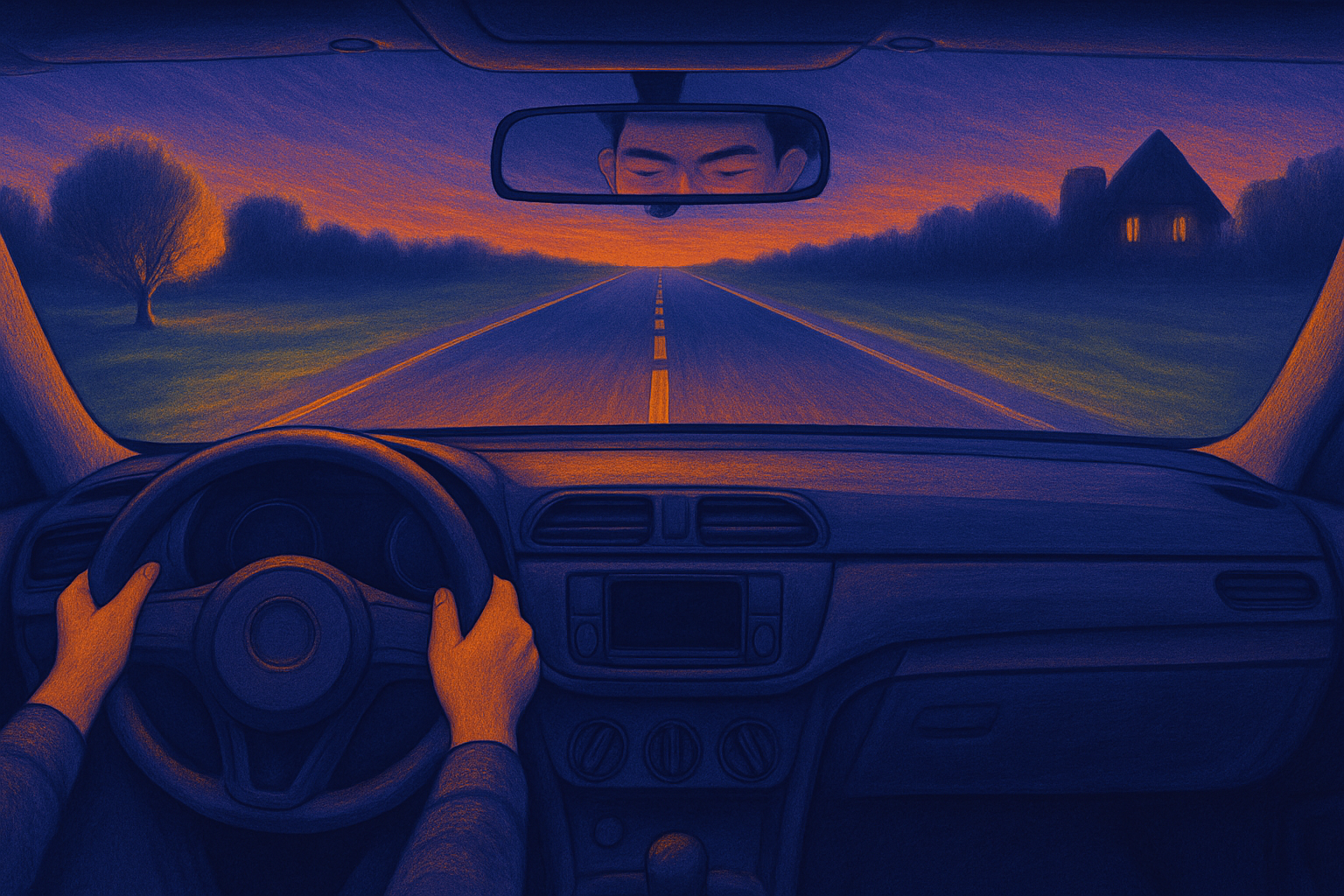II — While Driving

Series: Road Without Signs — On the Psychology of Moving Through a World Increasingly Run by Others
Sometimes, driving is the only moment in the day when we are truly alone with ourselves.
No witnesses, no need to explain, prove, or justify anything.
What happens behind the wheel often reveals more about our inner state than we are willing to notice.
Aggression, distraction, route choices — all bear the signature of emotions we haven’t yet acknowledged.
Or perhaps we have — but we brought them along anyway.
Driving as an Emotional Vent
Driving is often more than movement. It’s a kind of emotional space — a place with no audience, where suppressed frustrations “vent” in a way that isn’t socially sanctioned — until it escalates.
🔗 NHTSA Report on Aggressive Driving and Fatalities
Our personal driving ethics often reflect our internal value system.
But we’re not the only ones on the road — others are driving too.
And not everyone drives with the same inner compass.
That’s why it’s important to know how to stay calm when others break the rules.
Here are a few practical tips:
• If you’re in the left lane and someone wants to pass — move over.
There’s no need to prove a point. Your calmness is the key to safety.
• Leave enough space for aggressive drivers.
Their control over the vehicle is often less than they think.
• Adjust your own driving.
If someone persistently tailgates, speeds up, breathes down your neck — don’t retaliate. Choose composure.
• In case of stalking or endangerment — contact the police.
Psychological safety is just as important as physical safety.
One statistic reveals how much emotion lies behind seemingly "technical" driving behavior:
In the U.S., in 2022, 52% of drivers killed in speeding-related crashes weren’t wearing seatbelts — compared to 22% among those who didn’t speed.
This points to a deeper recklessness, even unconscious aggression — toward oneself and others.
The Silent Danger: Distraction
Aggression is visible — but distraction is insidious.
While everyone condemns phone use behind the wheel, few notice that they themselves engage in similar distractions — even with hands-free devices.
The problem isn’t just the conversation.
Cognitive load can linger for several seconds after the call ends — and those seconds can make the difference between safety and an accident.
Modern vehicles don’t help us stay focused — on the contrary, they divert our attention.
As many as 53% of drivers believe that if a feature is built-in by the manufacturer, it must be safe: infotainment screens, hands-free systems, voice commands...
But just because something is convenient doesn’t mean it’s safe.
Distraction is not caused by technology’s complexity — but by the illusion that we can do everything at once.
The Emotional Landscape in Motion
The environment we pass through while driving is never entirely neutral.
A street is not just a route — it holds memory, meaning, atmosphere.
The daily commute may carry traces of boredom, pressure, or suppressed resignation.
The street in front of a hospital — tension.
The road to one’s hometown — nostalgia, tenderness, an unplaceable knot in the stomach.
The driver unconsciously becomes an interpreter of their own emotional landscape.
Passing through space means also passing through emotional layers — often without clear awareness.
The surroundings are not just physical context — they are projections of what has been lived.
So when we look through the windshield, we’re often actually looking at something deeply personal:
• a place where something important happened,
• a spot that no longer looks the same,
• a landscape that looks at us the way we wish someone would.
Some streets we don’t remember by traffic — but by what changed inside us as we drove through them.
Driving then is not merely operating a vehicle — it’s moving through our own emotional map, where signposts are not road signs, but feelings.
When Space Loses Its Face
🔗 https://www.gradnja.rs/dorcol-stanovi-gradilista-marina-park-stanogradnja/
We are witnessing intense urban transformation.
Roads we’ve traveled for years no longer look the same: streets are widened, facades vanish, trees are cut down.
New buildings rise in places where old habits used to live.
What we once recognized instinctively now requires conscious effort.
And with external change — our internal map shifts too.
Accelerated urbanization disrupts emotional context.
Streets that held meaning — no longer exist.
Landscapes that calmed us — no longer resemble themselves.
Spaces where we felt at home — suddenly feel foreign.
But there is something deeper in this change:
when we no longer recognize the space, we often no longer recognize ourselves in it either.
The road is no longer just a space of movement, but of disorientation — not only spatial, but emotional.
Driving then becomes a task of adaptation — no longer a habit.
One study shows:
negative emotions, caused by traffic experiences, alter driving behavior.
Drivers under such emotional influence make more cautious decisions and perceive risks more intensely.
These findings support the use of visual materials in preventive education.
Because emotions — even when unspoken — always ride with us.
In the Next Chapter:
As the vehicle keeps moving, attention increasingly turns inward.
Next comes a text on the inner flow — on the thoughts that drive us and the routes we unconsciously choose, not because they’re the fastest, but because they shield us from what we don’t want to encounter.
Traffic Flow vs Inner Flow — about the driver who doesn’t just steer the wheel, but also their own thoughts.
